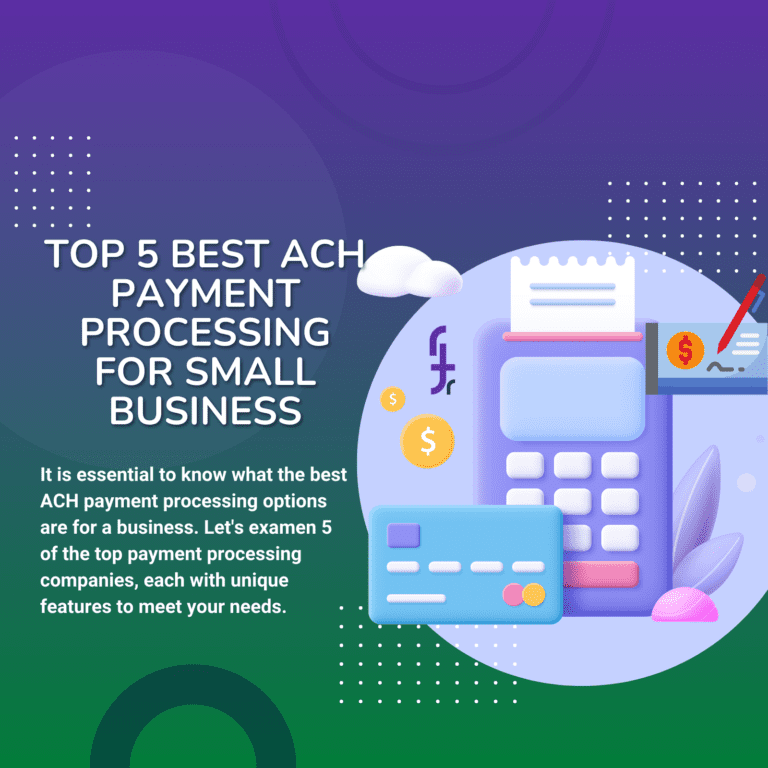How To Build Business Credit Without Using Personal Credit

Starting a new business can be challenging, especially when it comes to getting financing. A lot of new business owners turn to personal credit cards or loans in order to get their businesses up and running, but this can be a huge mistake.
This blog post will walk you through how to build business credit without using personal credit. Business credit has a lot to do with the foundation you lay for your business in the beginning. So I will focus on the perspective of someone who is just starting out and doesn’t have any business credit established yet.
Also, if you already have an established company but now you want to focus on building your business credit, this post can guide you as well. This information can help you see where you fall short of having a solid business credit foundation, so you can correct it and build from there. Let’s get started!
What Is Building Business Credit Exactly?
If you’re just starting out in business, you may be wondering what exactly building business credit entails. In short, it’s the process of establishing a credit profile for your business.

This can be beneficial in a number of ways, including helping you to qualify for loans and improving your chances of being approved for lines of credit.
Keep in mind that your personal credit score will not be used to determine your business credit score. Therefore, even if you have poor personal credit, you can still build good business credit.
One thing to note is that personal and business credit can be closely linked. For example, if you use personal assets as collateral for a business loan, your personal credit score may be impacted if you default on the loan. Therefore, it’s important to understand the risks involved before using personal resources to finance your business.
Building business credit generally takes time and patience. However, there are some steps you can take to speed up the process and make sure it is done right from the beginning.
Reasons You Need To Know How To Build Business Credit Without Using Your Own Personal Credit
When starting as a new business owner, it’s more to your advantage to build business credit without using your personal credit. Your personal credit history can be a mixed bag of good and bad experiences, but businesses are judged solely on their own creditworthiness.
Additionally, if you ever need to take out a small business loan for your business, you don’t want to have to put up your personal assets as collateral with a personal guarantee.
Here are some specific reasons why it’s important to build business credit without using your personal credit:
1) You don’t want your personal credit history to hurt your business’s chances of getting approved for loans or lines of credit.
2) If you ever need to take out a loan for your business, you don’t want to have to put up your own assets as collateral.
3) Establishing business credit shows that you’re serious about your new venture and helps lend credibility to your brand.
4) When you have strong business credit, you’ll have more negotiating power when it comes to interest rates and terms with lenders.
5) Good business credit can help you get approved for a credit line, leases, contracts, and other agreements.
Building business credit without using your personal credit is an important part of being a successful business owner. By taking the time to establish strong business credit from the outset, you’ll set yourself up for success in the long run.
Step-By-Step Instructions To Build Your Business Credit With A Solid Foundation
Building your business credit profile can be confusing and somewhat mysterious, especially since it differs from personal credit.

In this step-by-step guide, I want to give you a clear path of how you can establish a strong foundation for your business credit, that will serve your business well into the future.
This guide will clarify the process, but also give you an understanding of what it takes to build a solid business credit profile from the beginning and how to do it.
Here is a list of steps that will be described for you:
- Step 1 – Settle On A Business Idea And Set A Strong Foundation
- Step 2 – Form Your Business Entity With The State
- Step 3 – Get A Federal Employer Identification Number (EIN)
- Step 4 – Set Up A Website And Business Email
- Step 5 – Get And List Your Business Phone Number In The 411 Directory
- Step 6 – Open A Business Bank Account
- Step 7 – Obtain A D-U-N-S Number For Free
- Step 8 – Start Building With Vendor Tradelines
- Step 9 – Continue Building By Establishing Financial Tradelines
- Step 10 – Monitor Your Business Credit Scores And Grow
Since business credit can be complex and because I want to keep this guide as simple as possible, I will touch on each subject with what I believe to be the most essential to satisfy each step.
With that in mind feel free to dig deeper into each step with further reading and research if you so desire.
So if you are a new business just starting out or just beginning to focus on building your business credit, let’s get you started on a solid path.
Step 1 – Settle On A Business Idea And Set A Strong Foundation
By taking the time to settle on a good business idea and set a strong foundation, you will increase your chances of success for financing as a new business owner.
If you have a business idea already in mind you are ready to set your foundation, if not then take your time and do some research. You will want to consider an industry you may already understand or one that you are passionate about.
There are plenty of small business ideas to choose from, but to give yourself the best chances at business financing, if possible, you will want to choose one that is not considered a high-risk industry, in terms of business financing.
Once you have chosen your business idea now it is time to set it up to give it a solid foundation. Consistency across the board is the key, I will explain.
The information you start to give about your company needs to match and be the same for all applications and accounts that you set up, all the time. One of the biggest factors a business lender or creditor will look at when considering your business for financing is if the information on the company is the same and consistent across all public information and business accounts.
For example, if the business name is spelled wrong or the principal business address is different on your bank account from your business registration, creditors will view that as a red flag and consider it a fraud risk. Once that is done, no financing.
Since you have control of this from the beginning, you want to make sure you give yourself the best chance at any financing in the future by keeping all information about your company consistent.
Always keep this in mind, and if you find any inconsistencies correct them as soon as possible so all your business information is uniform.
Now let’s look into some actions you will want to follow as best as possible for setting a solid foundation.
Choose A Business Name Wisely
A business name is more than just a title, it’s the first impression you make on potential customers and partners. A poorly chosen name can be the difference between success and failure with financing because it can label your business as being in a high-risk industry.
The key to choosing a business name wisely is to ensure that it is reflective of your company’s values and mission. It should be easy to pronounce and spell, and it should be memorable. Try to avoid names that are too long or mysterious, as they may be difficult for people to remember or spell correctly.
Instead, pick a name that is simple, straightforward, and representative of your brand. Do not be too concerned that your business name does not display your industry in its title. As you build your brand it will be evident what your business represents.
Knowing that you will eventually need to set up a domain name for your business website and email, you can also use a domain name search to see if a potential business name is available. This can also help you in deciding on a business name. Try to get a .com domain if possible because it is the most popular and easiest to remember. I will touch more on this later.
With careful consideration, you can choose a business name that will help you attract the right customers and partners from the outset.
Choose your SIC And NAICS Code
This is not talked about very often when setting up a business, but it is probably one of the most important factors in setting a solid foundation for your business credit profile.
The IRS uses these codes to label your business and monitor your tax returns for audits and business lenders use these codes to determine if your business is high risk for lending purposes. So I would say it is an important step in the process of setting up your business properly.
You will be asked to identify your type of business and industry when you apply for an EIN with the IRS and when you apply for any type of business financing. With that in mind, it is important to choose your SIC and NAICS codes in the beginning, so that you are choosing the best ones for your business and controlling how your business is labeled.

If you do not choose and dictate your business type and purpose, then you leave that in the hands of chance and someone else labeling your business. That is not a good thing and may end up hurting your chances of financing or even causing unnecessary tax headaches in the future.
Take the time to research the right and best industry codes for your business and you give your business the best possible advantage by choosing the codes yourself.
Decide On A Principal Place Of Business
As a new business owner, one of the first decisions you’ll need to make is where to establish your principal place of business. This is the location where your company will be registered and also where important correspondence, like legal documents and invoices, will be sent.
Additionally, this is the address that will be associated with your company and will be used for things like your business license and tax filing. While it’s possible to run a business entirely remotely, it’s important to have a physical address for your company.
A post office box or UPS store may seem like a convenient option, but it’s important to remember that these are not considered acceptable addresses for many lenders. When choosing a location for your business, be sure to select a physical address that can be used for official correspondence.
If you are running a virtual business or starting small from your home, you may want to consider renting a virtual office. This will give you a professional address to use for your business, without the overhead of a traditional office space. Alliance or Davinci can give you some virtual office options to choose from.
Whatever option you choose, make sure that you select a physical address that will present a professional image for your company giving you the best chances of financing in the future.
Once you have settled on your initial decisions for your business, a business name, SIC and NAICS codes, and the principal place of business, it is time to form your business entity.
Step 2 – Form Your Business Entity With The State
Any new business owner must decide on the appropriate legal structure for their company before registering it with the state. Each type has its own benefits and drawbacks, so it is important to choose one that best suits the needs of the business.
The most common type chosen by small business owners is a Limited Liability Company (LLC). But if you are unsure about the type that is best for your industry or business, you may want to consult with an attorney or accountant to help in deciding which one is right for you.
Once you have chosen a structure, you can register your company with the state by filing the appropriate paperwork and paying any required fees. This process can vary depending on the state, but generally requires the filing of articles of organization, incorporation, or a partnership agreement.
Most states now have a way for you to file your business entity online. You can search for this online. This process is generally quick and easy and can be completed in a matter of minutes. You will likely need to provide some information about your company, like the name, principal address, name of registered agent, and type of business.
Be sure to have all of your information ready before filing, as to make the process go smoother for you. Once you have filed your business entity with the state, you will receive a certificate of incorporation or similar document. This document is proof that your company is a legal entity, and should be kept safe for future reference.
If you don’t want to take the do-it-yourself approach to form your business entity, there are services online that can handle the process for you. In addition to forming your business, they can provide other essential business services as well, like serving as a registered agent for your business. This has an advantage and I would definitely consider it for your small business.
Once the paperwork is filed, you will now be able to formally operate your business. The next step would be to get your business an EIN.
Step 3 – Get A Federal Employer Identification Number (EIN)
As part of the business setup, you will need to obtain a Federal Employer Identification Number (EIN). This is a nine-digit number that is assigned by the IRS and used to identify your business for tax purposes.
You will need to provide your EIN when you file your business taxes, open a bank account, or apply for a business loan. Obtaining an EIN is a simple process that can be done online, by mail, or by fax.
When applying for your business EIN, remember to provide the NAICS code you chose for your business and the exact description as it indicates.

Once you have obtained your EIN, you will be able to use it to complete all of the necessary setups for your business, including setting up a bank account for your business.
Step 4 – Set Up A Website And Business Email
As a new business owner, it’s essential to have a website and business email that reflects your domain name.
The domain name does not have to be an exact match to your business name. For example, if the name of your business is, “Star Brands, LLC.”, you can choose starbrands.com, starbrandsco.com, or starbrandsllc.com, whichever is available. After settling on a domain name you can move on to setting up your website and then business email.
Your website is often the first impression potential customers will have of your business, so it’s important to ensure it’s professional and up-to-date. It also serves as an online business card to potential lenders and vendors, so again make sure all information on your website is consistent as we have discussed earlier.
To start, your website can be basic, and then later as the need arises you can expand on it. There are plenty of inexpensive services that can help you get a website up for your business.
You can try Bluehost to get you started. They are pretty reasonable and they offer a free domain name, which is a plus. You don’t have to spend a lot of money or time on this, you just want to get something launched and in place, to satisfy your business profile setup. Following this, you want to make sure you set up your business email. You can do this with your web hosting service as well.
A business email gives your company a sense of legitimacy and shows that you’re serious about doing business. It is viewed as more professional than just using a third-party email, such as Yahoo or Gmail. It also allows you to easily communicate with customers and clients.
Having a website and a business email are both essential components of running a successful business and building a solid business profile.
Step 5 – Get And List Your Business Phone Number In The 411 Directory
There are a lot of important decisions to make when starting a new business. Choosing a phone number for your business is one of them. While you may be tempted to just use your personal cell phone number, this is not always the best idea.
First, it can be difficult to keep your business and personal life separate when you’re using the same phone number. Second, answering your phone at all hours of the night probably is not your intention, customers will call at all hours even if it is to only leave a voicemail.
Additionally, it is not professional and it is limiting as your business expands and grows. For these reasons, it’s often best to get a separate business phone number.
There are a few different options for business phone numbers. The best one is to get an 800 number, which is toll-free and can be forwarded to your personal phone and redirected to any phone at any time.
Another option is to use a VoIP service, which allows you to choose a local number and have it forward calls to your personal phone. There are VoIP services that provide an 800 number as well.
There are a lot of phone service plans available that are flexible and can give you plenty of options for you to tailor a plan that works best for your company. Whichever option you choose, having a dedicated business phone number is important for maintaining a professional image and keeping your business and personal life separate.
After you have settled on what your dedicated business phone number is going to be, you need to get it registered in the 411 Directory. Having this listing is essential in establishing your business as a legitimate company doing business.
One of the easiest ways to do this is to list your business using the service, listyourself.net, which is a free service for one business listing.

Be sure to choose business and then fill out the information accurately, remembering to keep all your public information uniform.
Rather than just pick a business category, it is better for you to choose and enter a SIC Code which accurately defines your business. Once you choose one, use that same SIC Code with all your future business listings and applications.
Step 6 – Open A Business Bank Account
As a small business owner, keeping your personal and business finances separate is crucial. One way to do this is to open a bank account for your business.
A business bank account can offer a number of advantages, including helping you to manage your cash flow more effectively. When you have a dedicated account for your business, it’s easier to track expenses and income. This can give you a better idea of where your money is going and where you can cut costs.
Also, a business bank account can make it easier to get approved for loans and lines of credit. Lenders will often view businesses with separate accounts in a more favorable light.
If you are already banking at a bank for your personal banking needs, this can be an easy choice for opening a business account there as well. I would recommend talking to your bank to get instructions on what they would require and a list of items you would need to bring in order to open a business account with them. Again, just make sure the business name and business information are all uniform in the setup process.
A business bank account is an essential tool for any small business owner. Once you have one in place, you have your foundation nearly complete and set up. This leaves you one last step for you to set up, so that you can begin to establish your business credit profile. Now it is time to get a D-U-N-S Number set up for your business.
Step 7 – Obtain A D-U-N-S Number For Free
As a small business owner, you may be wondering how to obtain a D-U-N-S Number for free. D-U-N-S Numbers are issued by Dun & Bradstreet, a credit reporting agency, and are used to track businesses for credit purposes. Obtaining a D-U-N-S Number can be helpful if you’re looking to establish credit and improve your business’s credit score.

There are a couple of ways to obtain a D-U-N-S Number for free. One way is to visit Dun & Bradstreet’s website and fill out their online form or another way is to contact Dun & Bradstreet directly and request a D-U-N-S Number over the phone. Either method can take up to 30 business days for the number to be processed and issued. Often it comes sooner. Once your number is ready they will email it to you, so be sure to monitor your email for when it arrives.
Dun & Bradstreet does offer a paid option, If you decide to subscribe to one of their packages, this method can speed up the process and it takes up to 8 business days for the number to be processed and issued. Whichever method you choose, obtaining a D-U-N-S Number is a simple and straightforward process.
Key things to note in order to successfully set up your D-U-N-S Number
You are setting up your business credit profile when you attain a D-U-N-S Number. With that in mind be sure to list your industry correctly and that your business information matches with how you have been setting up your other accounts and registrations. Remember everything needs to match and be uniform.
Also, it is important to note that Dun & Bradstreet will call the business number you provided to verify your business, that you the owner applied for the number, and that all the information submitted is correct and accurate. If you do not answer your phone to verify this information, you will not be issued a number. So make sure you pick up the call from Dun & Bradstreet, they only make a few attempts and if unsuccessful will deny the request. If that happens you will have to reapply all over again.
Once you have successfully applied for your D-U-N-S Number and have completed all the steps prior to this point, you now are ready to start building your business credit by acquiring tradelines.
Step 8 – Start Building With Vendor Tradelines
As a business owner looking to establish business credit, one of the best places to start is by building vendor tradelines. Vendor tradelines are essentially lines of credit that your business has with vendors and suppliers.
The credit that they extend to your business can be a net 30 account, which is the most common when starting out. A net 30 means that your business has 30 days from the day of purchase to pay for the goods or services. There are plenty of vendors to choose from that offer a net 30 account.
By paying these invoices on time and in full on or before the final day, you can establish a good payment history with these vendors, which will then be reported to the business credit bureaus.
This payment history will help to boost your company’s credit score, making it easier to qualify for business loans and other forms of financing in the future. It’s important to note that not all vendors report to the business credit bureaus, so be sure to know or ask before you open an account.
You don’t want to waste your efforts and not benefit your company’s credit, especially if there is another supplier you can use that will report to the business credit reporting agencies. Taking the time to research will save you time and get you to your goal faster.
Also, when choosing vendors for tradelines, it’s important to make sure that there is no personal guarantee on the account. This ensures that your personal credit scores will not be impacted by being reported on your personal credit report.
If you have no business credit history at all, sometimes the vendor will ask for a security deposit in place of a personal guarantee and personal credit check.
The vendor may also choose to extend credit to your business later after a certain amount of purchases have taken place, in order to gain confidence in you. It is a business relationship you are forming with the vendor, so be willing to be flexible in some ways as well.
By following these tips, you can start building strong vendor tradelines that will help build your initial business credit history.
Step 9 – Continue Building By Establishing Financial Tradelines
It’s important to continue to build a strong credit history for your business. Another way to do this is by establishing financial tradelines. Financial tradelines are lines of credit that are reported to your business credit report as well. They can be in the form of business credit cards, business loans, a business line, or even leasing agreements.
By making on-time payments and maintaining a good credit score, you can demonstrate to lenders that your business is a responsible borrower. This can make it easier to get approved for business loans and larger lines of credit in the future.
These types of tradelines are a bit more difficult to attain and are usually done after you have built some business credit accounts and good payment history. But, there are some credit card issuers that do provide business credit cards to new businesses as well, and without a personal guarantee.
If you are not ready to qualify for an unsecured business credit card they may offer you an alternative and be willing to start you off with a secured business credit card.
A secured credit card means that you provide a deposit for security and your credit limit is based on the amount of funds that you provide. Regardless, they will still report your payment history to the major credit reporting agencies for your business, not to your consumer credit.
More and more lenders are offering small business credit cards to startups and companies beginning to establish a business credit file. Do your research and you will find them, but be sure to understand the terms and conditions before you apply to make sure they will not affect your personal credit reports.
One that I would like to mention as a business credit card to start with, especially for a new business, is Divvy. They offer a way for businesses that want to start building business credit to get a credit line without it being a personal liability.
They have a business credit builder program in which you pre-fund your secured credit card with any amount and the payments you make with it are reported to the credit bureaus, Dun & Bradstreet and SBFE.
The advantage of this is that you build your business credit scores and can work your way up to an unsecured credit card with Divvy. It is a great way to get started with establishing a financial tradeline.
Step 10 – Monitor Your Business Credit Scores And Grow
In order to get to where you want to be with building business credit, you have to know where you are at all times. This is why constant monitoring of your credit scores and business information that is being reported is key.

By monitoring your scores, you can stay on top of your creditworthiness and make sure you’re getting the best terms possible from lenders. Also, if any information being reported on your business credit reports are incorrect or misreported, you can request to have them corrected immediately.
Checking your report regularly can help you catch errors and identify any red flags that might raise concerns with lenders. By keeping on top of your credit, you can help ensure that you’re in good financial shape and able to get the financing you need to grow your business.
The main business credit reports to monitor are Dun & Bradstreet, Equifax Small Business, and Experian Business. These three are sufficient for having an overall understanding of where your business lies in terms of credit.
There are a lot of free resources on the internet for checking the credit score of your business, but what is just as important as knowing the score is knowing what is being reported.
Nav is a company that can get you started with a free account which will give you a summary of all three business credit bureaus. They also offer full business credit reports and scores from the major business credit bureaus for a monthly subscription.
As a bonus, your monthly subscription payment is reported to all three major credit bureaus as a tradeline, which helps to build your credit. Having the ability to monitor the three major credit reporting agencies in one place is a super useful business tool and can save a lot of time and rapidly speed up your credit-building efforts.
Key Considerations For Successfully Building Your Business Credit Foundation
I have laid out many steps to properly lay a solid foundation for building business credit. Now I want to highlight some key things to keep in mind as you are building.
If you keep these in mind as you build your foundation and beyond you will give yourself the best chance possible of being successful when applying for a business loan, business credit cards, and any other types of trade credit.
First, keep all your business information uniform all the time. From the time you file your legal business entity with the state, set up a bank account for your business, IRS filing, and 411 directory service. I can’t stress this enough, keeping the information about your company uniform and without errors is highly important to your success in building credit.
Second, monitor your credit always. You are looking for errors to correct if any, and where you stand on your tradelines, so you know what moves to make and can plan accordingly. If you don’t keep score, you don’t know if you are winning or not, so monitor.
And finally, your first goal is to generate a PAYDEX score with Dun & Bradstreet. To do so you will need three tradelines reporting to DnB and you want that score to be 80 or higher.
The way to generate a high PAYDEX score is to pay off your net term invoices earlier than they are due. For example, if you have a net-30 account, pay it off in 20 days or less. Your credit score in business represents when you make your payments, the earlier the payments the higher the score.
In addition to generating a PAYDEX score, you need a minimum of 5 reporting experiences. For example, if you have a tradeline that reports to DnB and Experian, that counts as 2 experiences.
Once you have 5 reporting experiences and a PAYDEX score, you have achieved the initial stage of building business credit. Congrats you are now ready to take it to the next level!
Taking It To The Next Level: How To Go Beyond Your Initial Business Credit Foundation
Once you have reached your goal of building your initial credit, you now have some tradelines and credit history under your belt. Now you can start to push the envelope and apply for unsecured credit cards, retail credit, and fuel credit cards.

Adding more tradelines to your business credit file will help boost your credit score and give lenders more confidence in your ability to repay debt. Of course, it’s important to use any new credit lines responsibly and make sure you keep up with your payments. Paying early and more frequently will boost your scores, so keep that in mind.
Your goal after your initial credit is to eventually reach 14-15 tradelines. Make sure you have a nice mix of different types of tradelines, to give yourself a well-rounded profile. Once you have achieved this goal and your credit is in great standing, there is not much your business couldn’t have a chance at qualifying for. This is the goal you want to reach to be in strong standing with your company credit.
Alternatives To Building Your Business Credit On Your Own
Many business owners are unaware that there are programs and services available to help them build credit for their business. This can be especially helpful for small businesses or startups that may not have the credit history to qualify for traditional loans.
There are credit builder services for businesses that are an alternative to building credit on your own. They can guide you through the process and advise you on the steps you need to take for your credit building. Typically they assess your business and where it stands currently and then formulate a plan of action to accomplish the credit goals for your company.
As you begin to execute on the plan, they will monitor and advise you of the progress you are making on your credit building and adjust the plan accordingly to keep you on track to successfully meet your goals.
You can find these types of services online with a little research, but be sure to check the comments and testimonials of their past clients to give you an insight into a good quality company to work with.
Ultimately, there are a variety of ways to build business credit, and working with a reputable credit builder service can be an effective way to get started, especially if you don’t want to go at it alone.
Wrapping It All Up For Success
There is a lot of information that you can deep dive into when it comes to credit building for a business. What I have done in this article is try to cut down the information and simplify it in a clear step-by-step process for a business owner who is just starting out.
I have given you sufficient enough instructions that if you take action, you can not only set up a business from scratch, but at the same time lay a solid foundation to build business credit. Now that you have this knowledge of how to build business credit without using your personal credit, it’s time to get started if you haven’t already.
Follow the steps I’ve outlined in this article, and be sure to use a reputable credit builder service if you need help getting started.
With a little effort and focus, you can have a strong business credit profile that will open up opportunities for your company to borrow money and finance future growth. I wish you all the best in building business credit.






